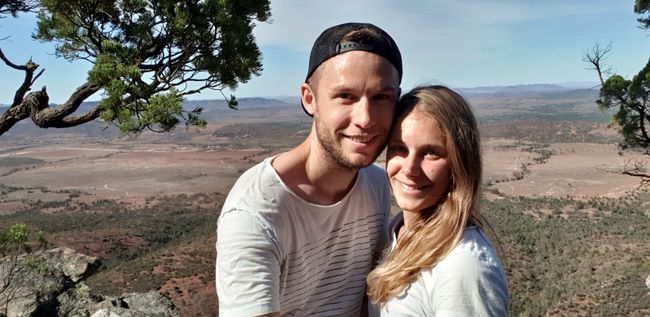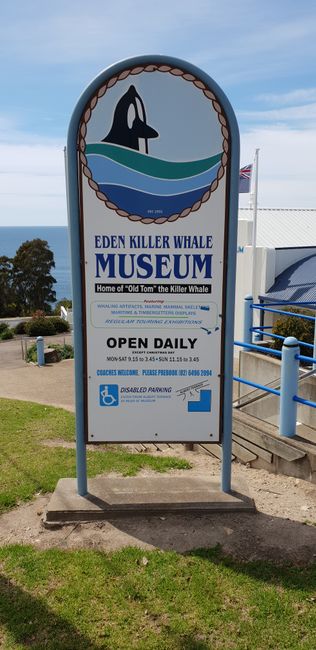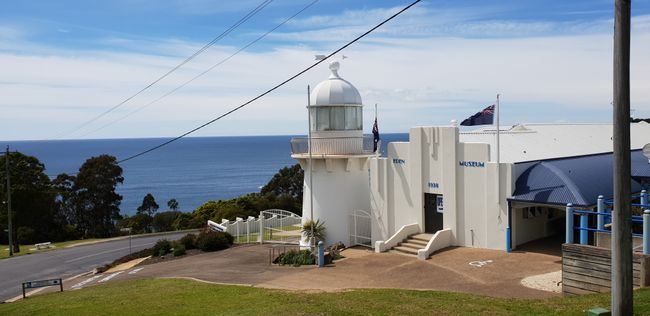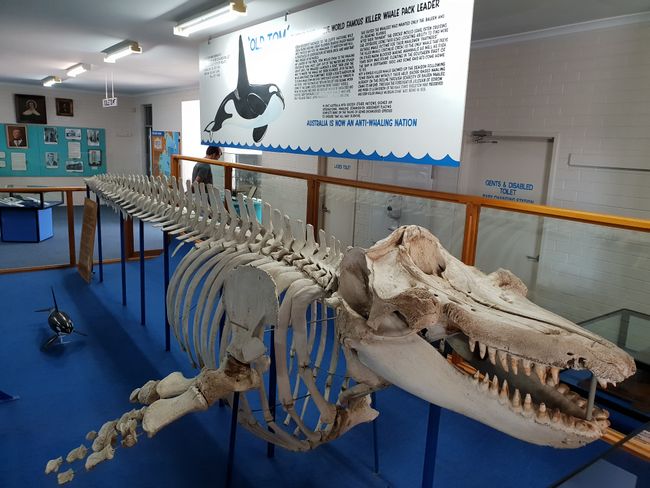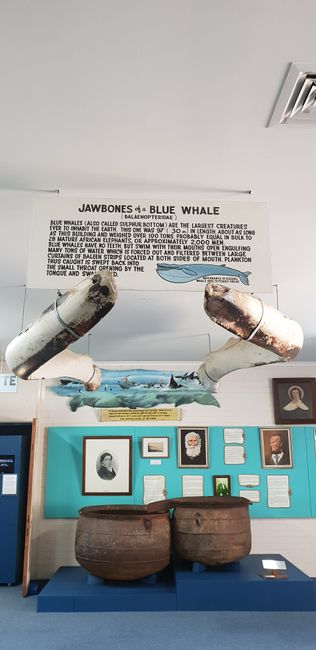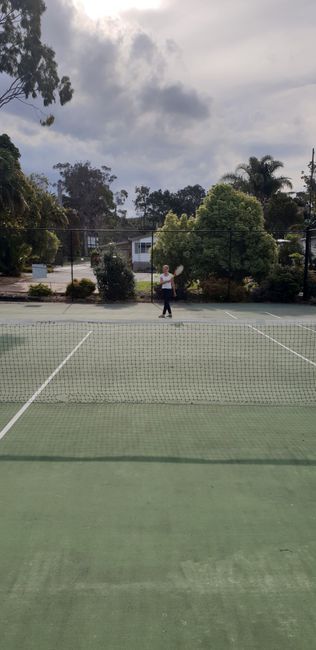Killer Whales & Tennis Lessons
प्रकाशित: 27.10.2018
बातमीपत्राचे सदस्य व्हा
Day 66 | Eden | 26.10.2018
Hello everyone,
As we sat at the breakfast table this morning enjoying our cereal & coffee, we both had the same idea: we wanted to spend another day at this fantastic campsite in Eden and enjoy the weather. Spring seemed to have finally arrived in New South Wales and we were excited for more rounds of mini golf and a walk through the town.
First, we walked along the main street, passing some shops, stores, and cafes until we reached the 'Killer Whale Museum', which opened its doors in 1939. The town of Eden became known for its Australian whaling heritage. From the late 19th century until around 1930, whales were hunted in the region and their fat, bones, and meat were processed and sold. Furthermore, this museum is dedicated to a killer whale (also known as an orca) named 'Old Tom'. This whale, who helped the whalers in killing humpback and baleen whales, died in Eden's bay in 1930. Here's a little story about it:
From around 1890 to 1930, Old Tom and other orcas worked with the whalers of Twofold Bay. The whaling business was operated from a land base and is unique in the cooperation between humans and whales. The orcas, who returned to Eden every season, could be identified by individual markings. Tom, Hooky, Humpy, and Stranger herded the baleen whales into Twofold Bay. Afterwards, the whalers were informed of the arrival of their prey by the orcas splashing their tails on the water's surface. The hunt began.
After the whalers harpooned the whale, the orcas helped expedite its death. They rolled over the blowhole to disrupt breathing, while others swam beneath to prevent the whales from diving and swimming away. The orcas took the tongue and lips of the deceased whale as a reward, and the rest was brought ashore by the whalers. The final whale was killed here in 1928.
On September 17, 1930, 'Old Tom' was found dead, floating in Twofold Bay. His skeleton was prepared and became the first exhibit in the newly built 'Eden Killer Whale Museum' in 1939.
The museum had a relatively old but always interesting look, and we spent about 90 minutes inside this two-story museum. We watched a short film about the history of whaling in a small cinema.
We continued our way and headed towards the harbor. There were many small boats in the water swaying back and forth. A man was painting the bow of a ship, and the smell of paint filled the air. Some seafood restaurants were open and attracted hungry people. The path led to the southernmost tip of the town, the 'Eden Lookout and Rotary Park'. Here, as so often before, we had a great view of the open sea, the cliffs, and a few boats. Janina unpacked our cereal bar, and we checked if we could spot any whales today, but we couldn't.
It was around 1 PM, and we planned to spend a relaxing day in our 'Garden of Eden'. So after a short detour at Coles, we returned to the campsite. We sent some voice messages to our family and felt like playing another round of mini golf. At the end of round 2, we were tied. We randomly chose a hole, and I took two shots, Janina took three. It was a close call!
To my dismay, Janina admitted that she had never held a tennis racket or played tennis before. So we spontaneously grabbed the rackets and balls and went to the court. Janina's first tennis lesson ever began! We hit balls to each other in the T-field, and to Janina's surprise, "it wasn't as easy as it looks on TV". I tried to teach her the techniques and rules of the sport, and we hit some balls over the net. She didn't do too bad for her first lesson ;)
We spent a long time in the kitchen in the evening, as we cooked a delicious potato and vegetable casserole with the oven included in the equipment. While the casserole simmered in the camp kitchen, we played several rounds of 'Skipbo' and 'Rummikub'. After a rather calm but beautiful day, we closed our eyes around 10 PM...
J♡J
बातमीपत्राचे सदस्य व्हा
उत्तर द्या
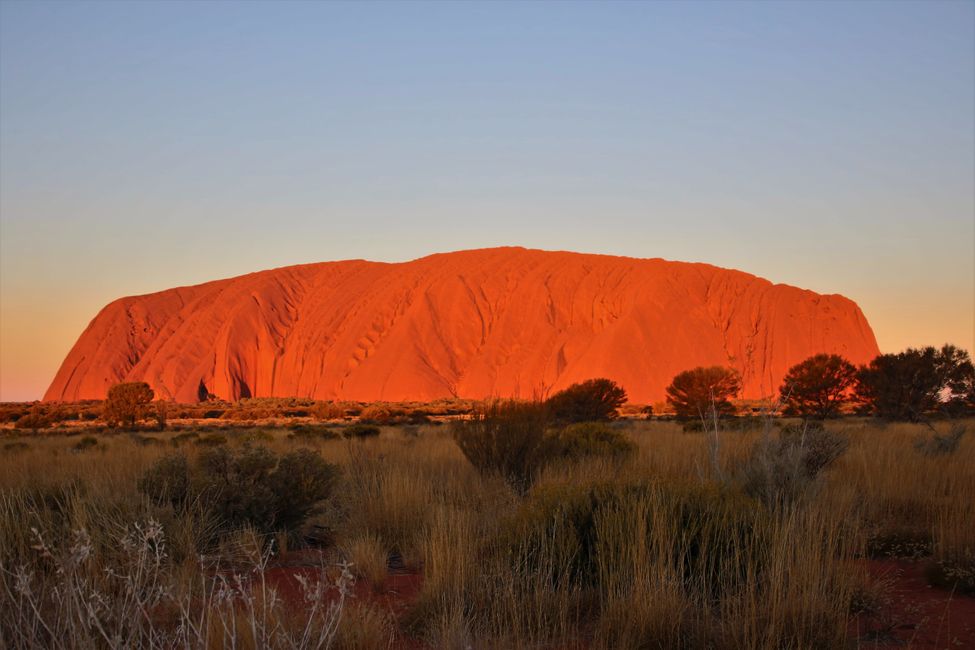
प्रवास अहवाल ऑस्ट्रेलिया

